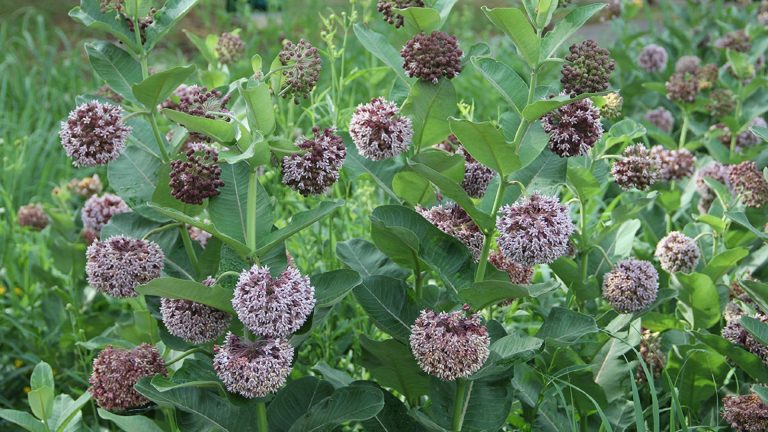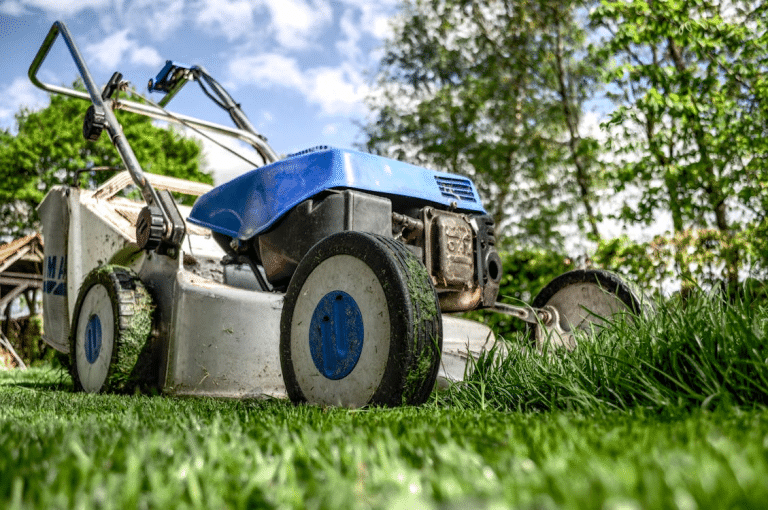Want to help protect monarch butterflies and bring native beauty to your garden? Learning how to transplant milkweed opens up fantastic opportunities for butterfly conservation.
Milkweed is a resilient native plant that provides food for monarch caterpillars and attracts pollinators. By growing milkweed in your own garden, you’re creating vital habitat while enjoying stunning blooms.
These hardy perennials are easy to care for once they’re established, and you’ll love seeing monarchs stop by during their migration.
I’ll walk you through the simple, proven methods for transplanting milkweed successfully. You’ll learn how to move these plants while supporting butterfly populations safely.
Get ready to become a monarch butterfly hero right in your own backyard!
Why Transplant Milkweed?
Milkweed is vital for monarch butterflies and local ecosystems. It’s the only food source for monarch caterpillars, making it essential for their survival.
Without enough milkweed, monarch populations continue to decline across North America. Every time you transplant a milkweed plant, you’re helping create important habitat corridors for these incredible migratory butterflies.
You might need to transplant milkweed when redesigning your garden, moving homes, or due to construction. Transplanting helps move these valuable plants to areas with better growing conditions, allowing you to share them with friends and neighbors.
When Is the Best Time to Transplant Milkweed?
Spring and fall are the best times to transplant milkweed. These seasons offer moderate temperatures, which help the plants recover from transplant shock and establish themselves.
In spring, wait until soil temperatures reach 50-60°F consistently. This gives milkweed time to grow strong roots before summer.
For fall, transplant 6-8 weeks before the first hard frost. This ensures the plant has enough time to settle in before winter dormancy.
Avoid transplanting during the hot summer months, as heat stress can make it difficult for milkweed to adjust. Cool, cloudy days are perfect for transplanting.
How to Transplant Milkweed: Step-By-Step Guide
I’ll guide you through five simple steps to successfully transplant milkweed. You’ll learn how to move these vital butterfly plants without causing harm, all while sticking to ethical practices.
Material Required for Transplanting
Before you dive into transplanting milkweed, make sure you have everything you need. Here’s a list of the essentials to get you started:
- Shovel or spade
- Small trowel
- Weeding tool
- Moist paper towels
- Gloves
- Potting soil
- A container large enough for the rhizome root
Having these tools ready will make the whole process smoother and increase your chances of success.
Step 1: Pick the Right Milkweed
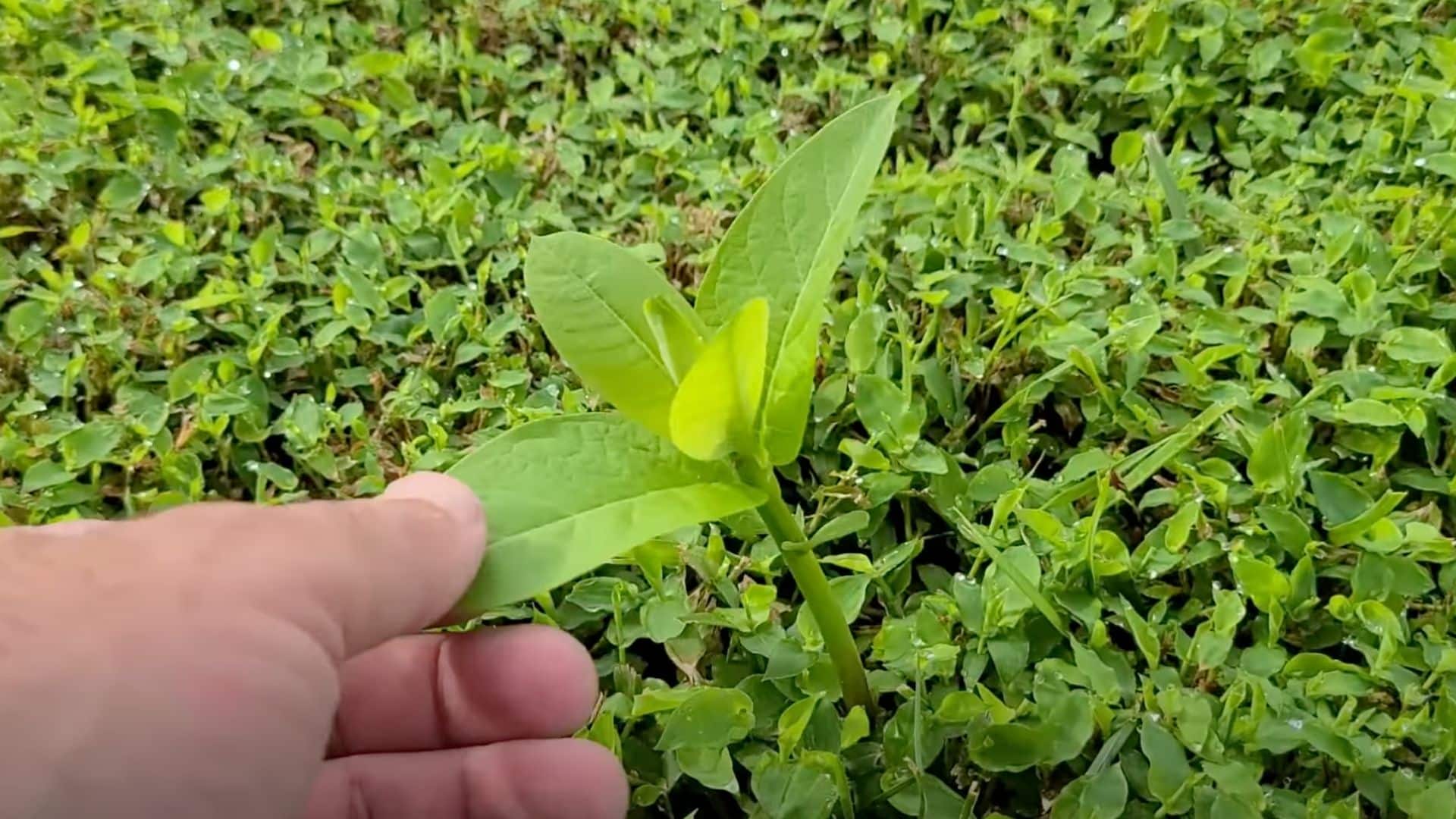
Choose smaller plants growing from rhizomes. These are easier to move because they don’t have deep taproots. Avoid taking plants with flowers, buds, or seeds; these are more difficult to transplant.
Young, healthy plants are your best bet. You want the transplant to succeed, so pick plants that can handle the move and flourish in their new spot.
Step 2: Dig Carefully
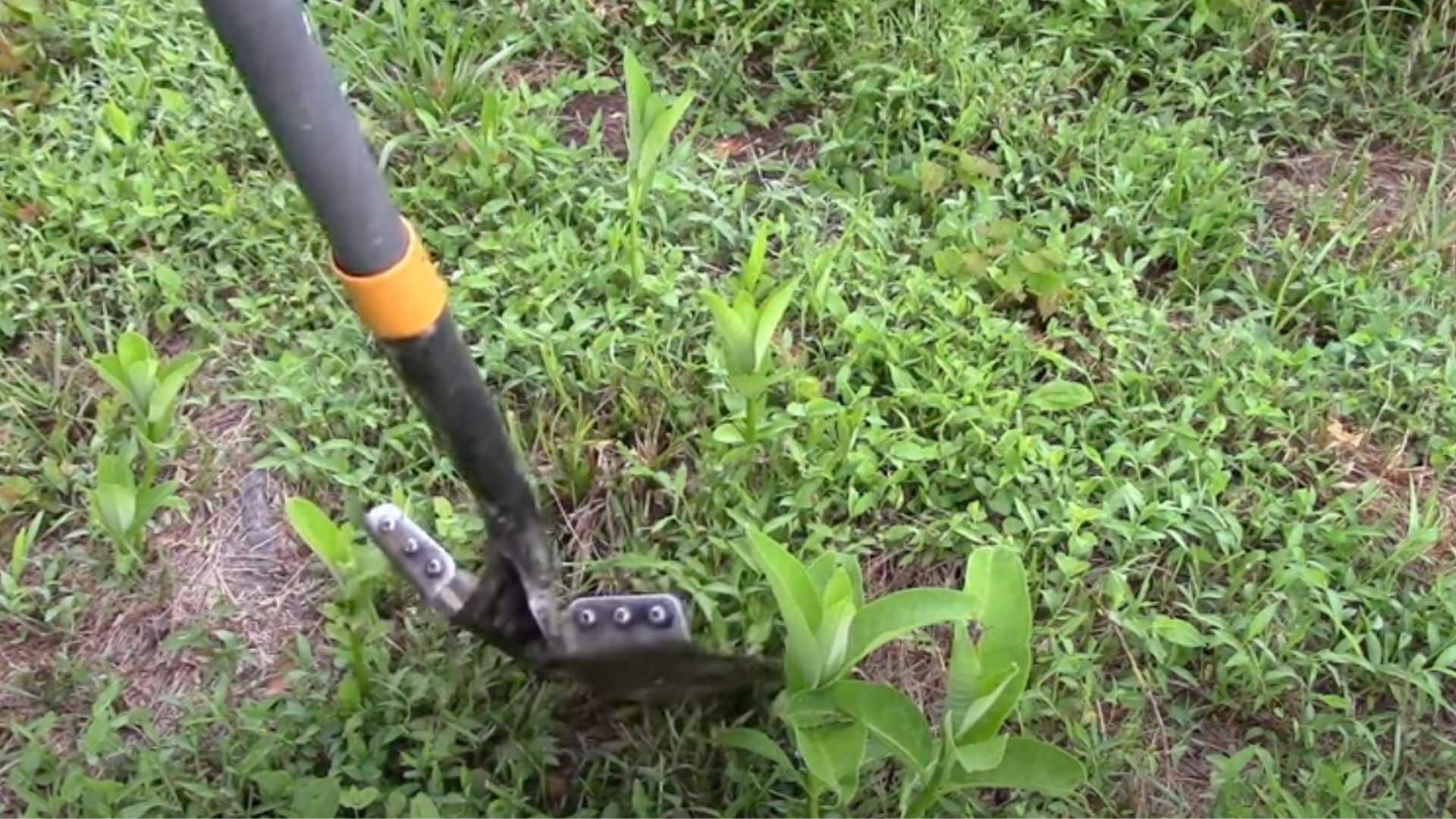
Take your shovel and dig around the plant’s base, aiming for about 6 inches of root. This gives the milkweed a better chance of rooting in its new home.
Be gentle with the roots; they’re sensitive, and any damage can hurt the plant. Dig slowly, and make sure you’re lifting the whole plant, roots and all, for a smoother transplant.
Step 3: Wrap the Roots
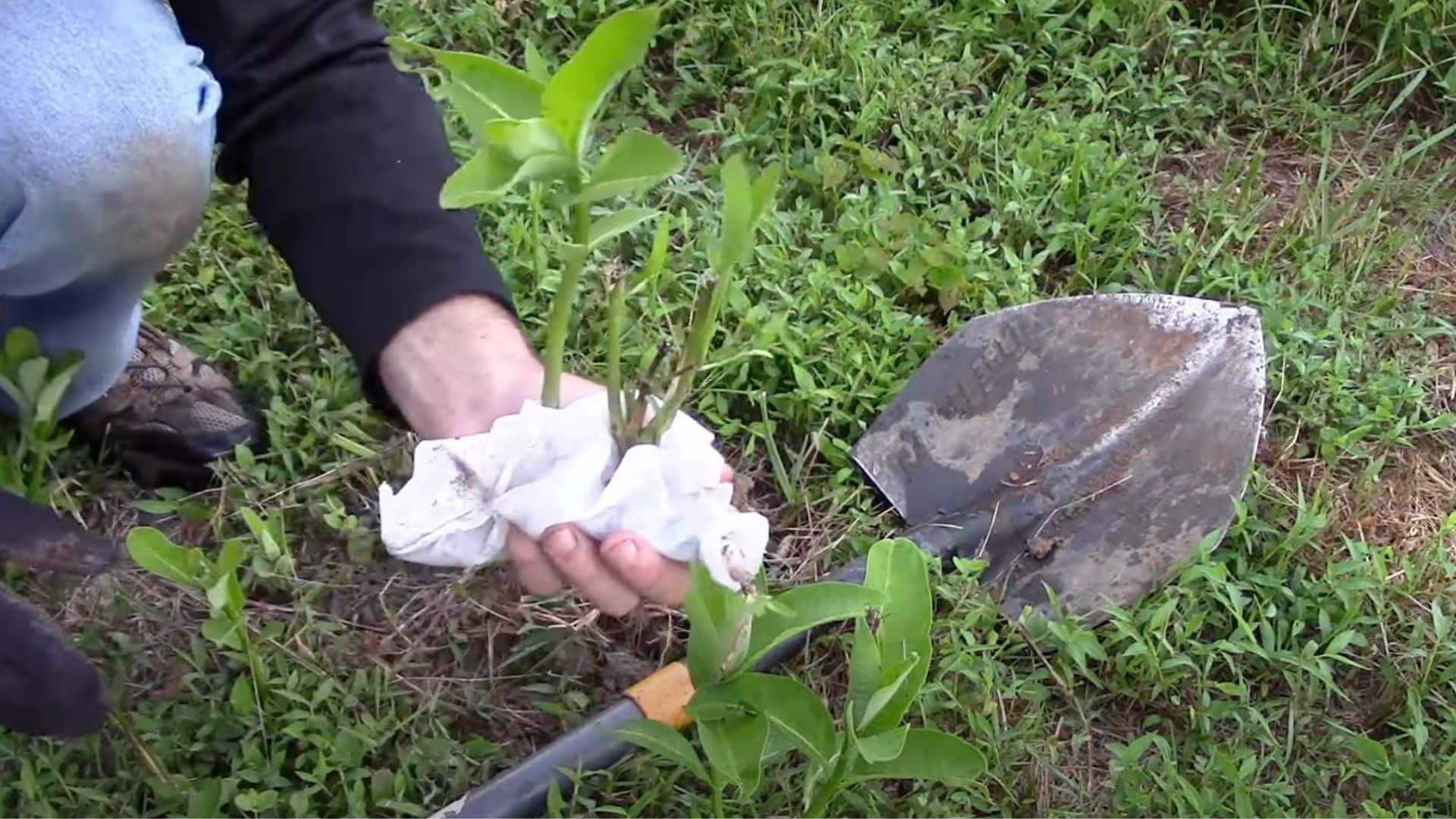
Once you’ve got the plant out, wrap its roots in a damp paper towel. This is key—dry roots won’t make it, and your plant’s chances go down fast. Stick the wrapped plant in a container to protect it during transport.
Make sure it’s out of direct sunlight, and avoid harsh conditions. A little care here will help the plant flourish later.
Step 4: Find a New Spot for It
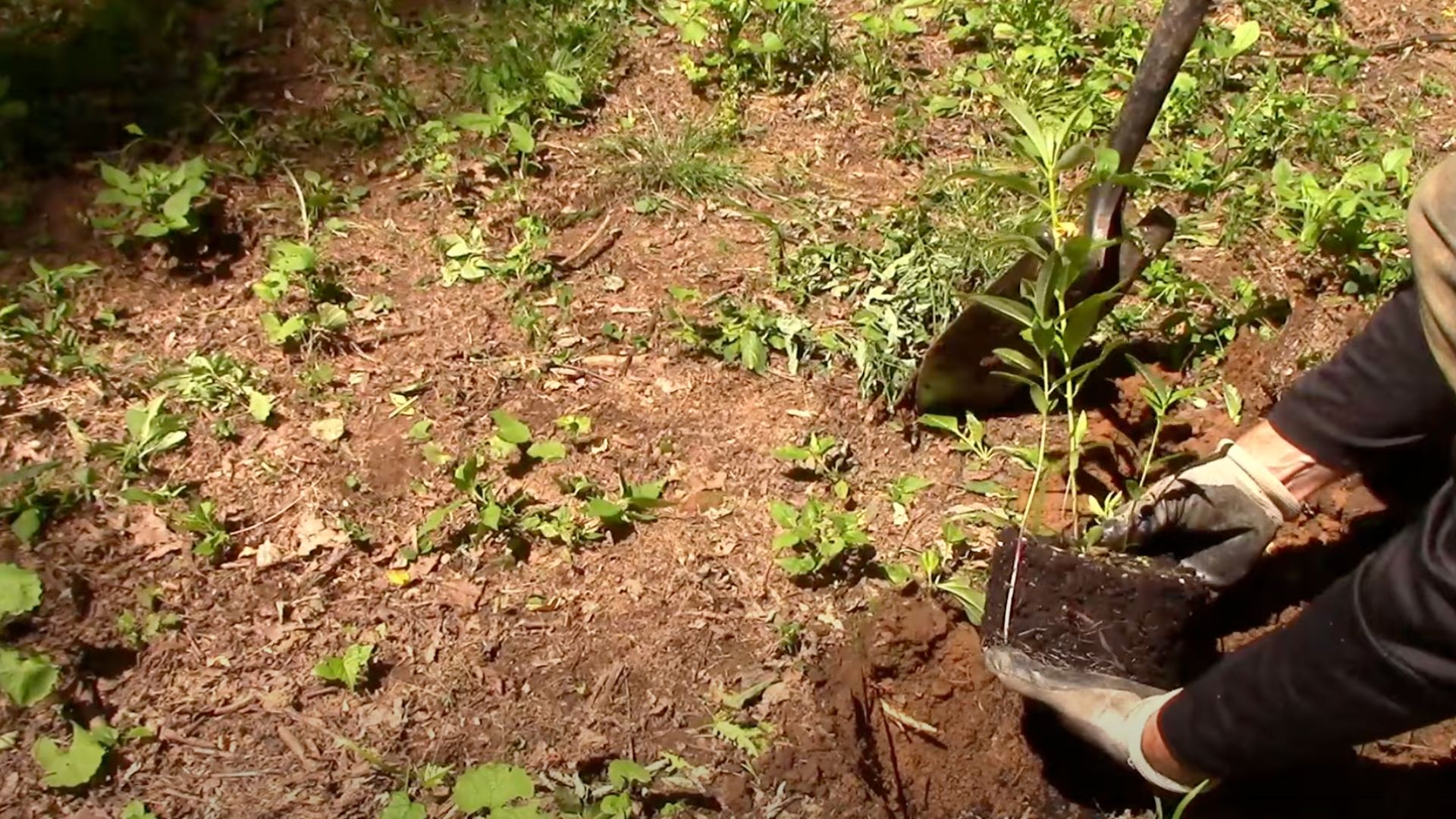
Now, plant it in a well-drained spot with at least 6 hours of sunlight a day. Dig a hole that’s wide enough to fit the roots without overcrowding them.
Set the plant back in at the same depth as before, cover the roots with soil, and water it thoroughly. Keep the soil moist for the first few weeks, allowing the plant to settle into its new home.
Watch and Learn: Video Instructions
For more details, visit Growit Buildit
Special Considerations for Different Milkweed Varieties
Each milkweed species has its own unique root system, and knowing how to handle these differences makes transplanting easier.
- Common milkweed spreads through rhizomes, making it simpler to transplant. You can dig up sections with multiple shoots, which gives them a better chance of surviving the move.
- Swamp milkweed also grows from rhizomes but prefers consistently moist soil. Keep these transplants extra wet during the first few weeks to help them settle in.
- Butterfly weed, on the other hand, has deep taproots that are tough to transplant and often break when digging. It’s best to choose younger plants under six inches tall for the best success.
Rhizome varieties recover more quickly because they have multiple growing points. When transplanting, tailor your method to the root system of each variety.
Common Challenges When Transplanting Milkweed
Transplanting milkweed can be tricky, but knowing what to expect helps you handle it well. Here are some common challenges and how to fix them:
- Transplant shock is a common occurrence and can cause wilting and yellowing of leaves within the first week.
- Some milkweed varieties have deep taproots, which make it hard to remove the entire root without damaging the plant.
- Keep the soil moist (but not soggy) during the first month to help the roots establish themselves.
- If the plant doesn’t recover after 3 weeks, trim back the stems by half to help redirect energy to the roots.
These issues are completely normal. With patience and proper care, your milkweed will likely recover and flourish.
Final Words
Successful milkweed transplanting is a powerful way to help expand monarch habitats, one garden at a time. You’ve now got the key steps to turn any transplanting challenges into big wins for butterfly conservation.
By moving milkweed plants properly, you’re spreading these crucial resources throughout your community. Every successful transplant creates new feeding stations, supporting future monarch generations.
Your efforts don’t just beautify your garden – they directly contribute to helping declining butterfly populations. Small actions like transplanting milkweed have a lasting, positive environmental impact.
Get started with transplanting milkweed today and watch your garden turn into a monarch magnet. These beautiful plants will multiply your conservation efforts for years to come.
Excited to begin your milkweed transplanting expedition? Share your success stories and tips in the comments below!


